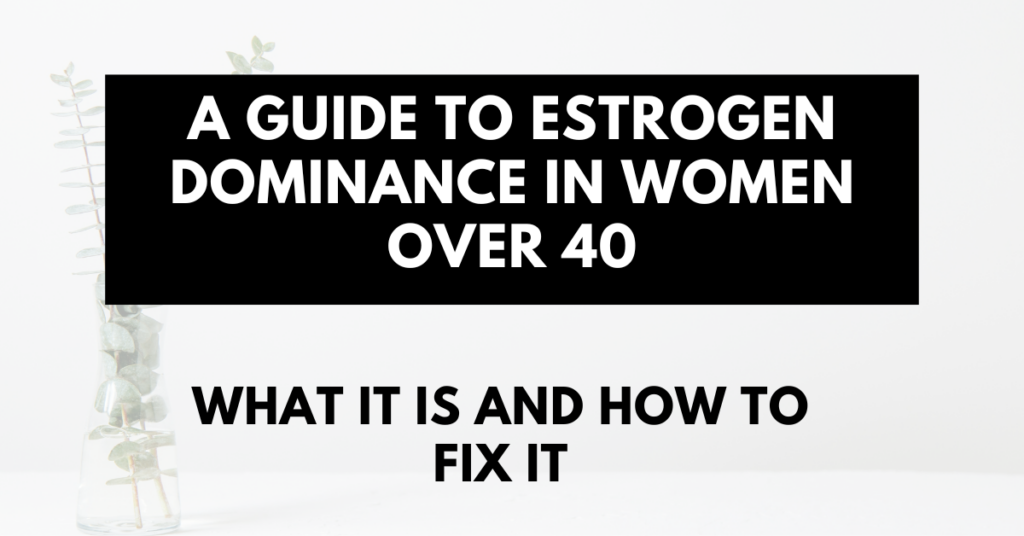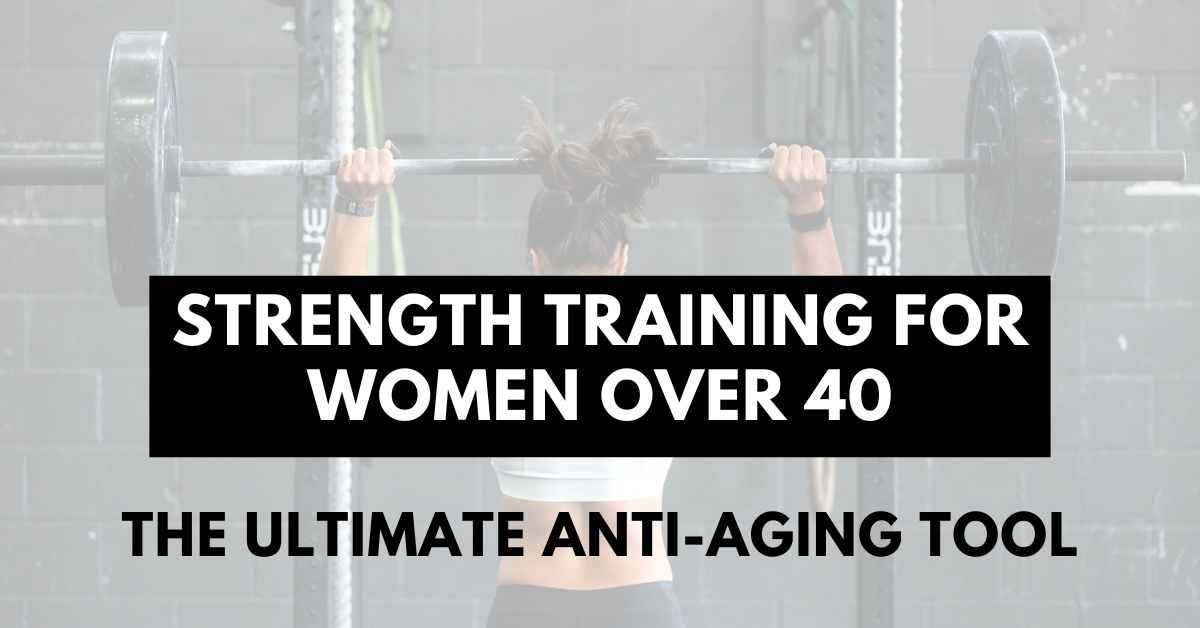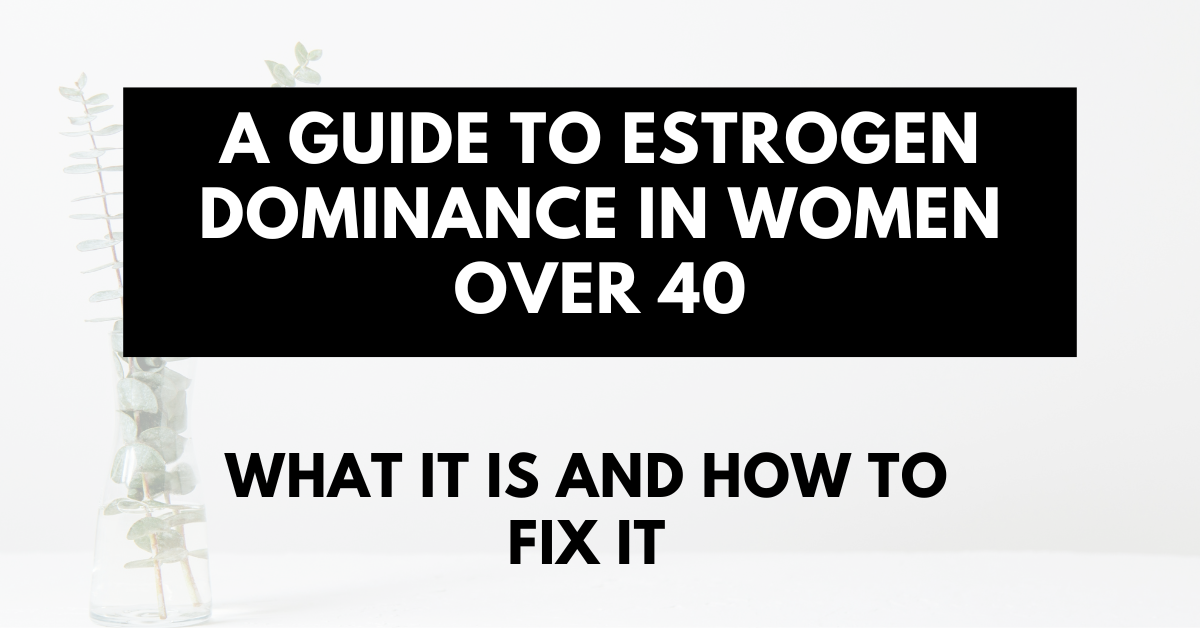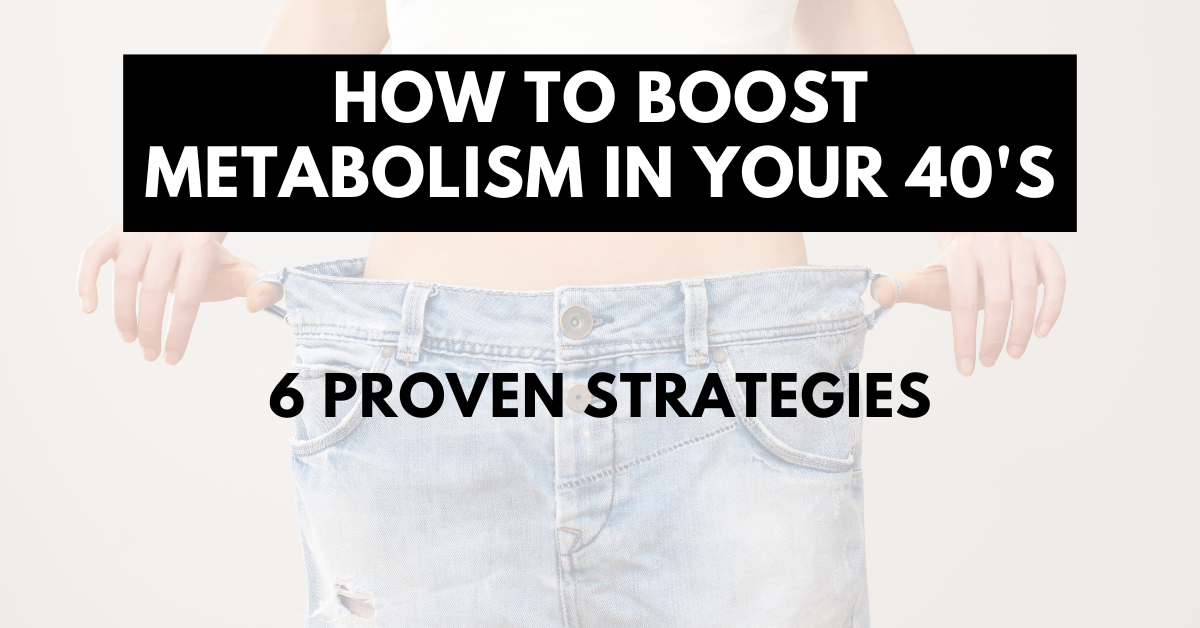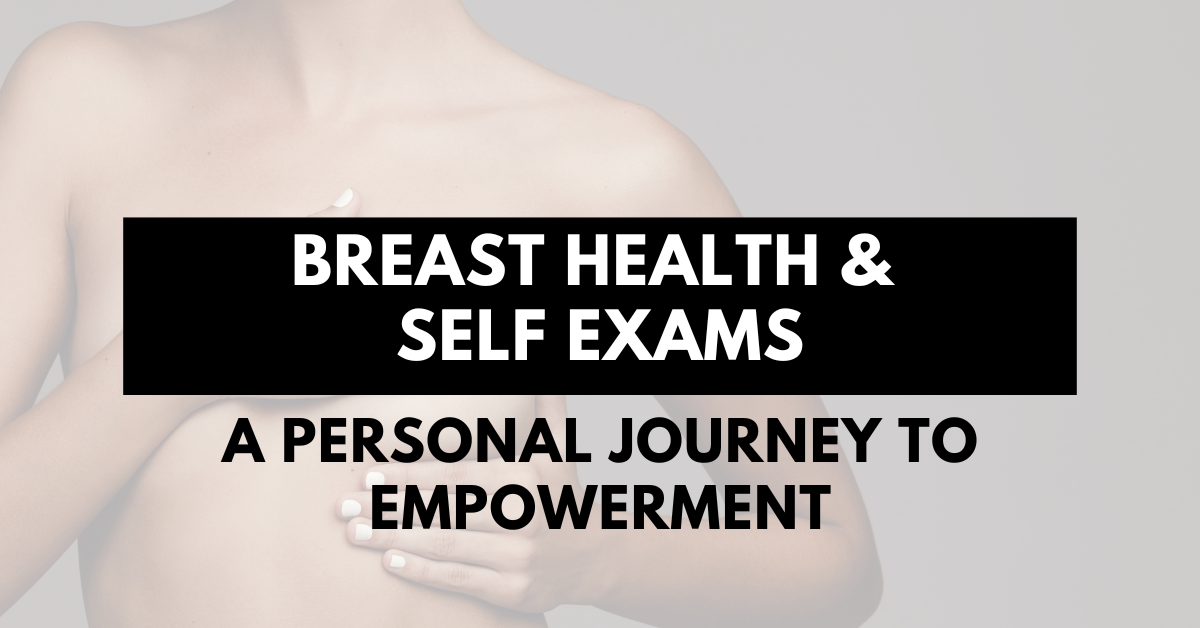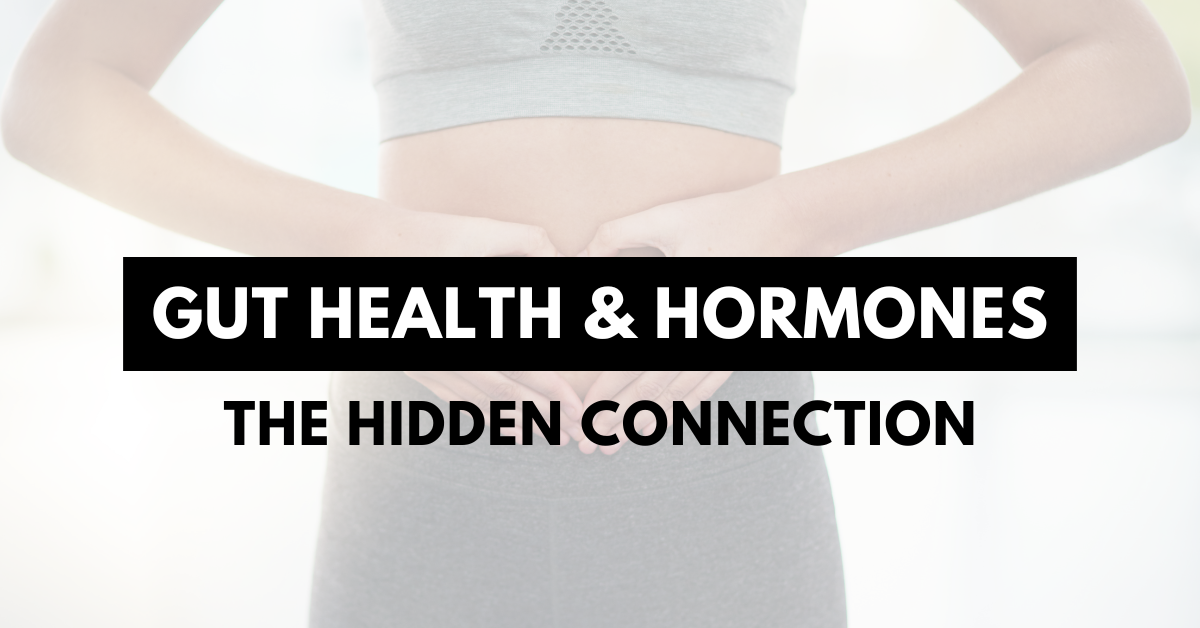I’ll be honest – when I hit 40, my body began to change drastically. It didn’t help that I was diagnosed with breast cancer at age 39 and thrusted into medical menopause over night, but for the first time in my life I felt my youth slipping away.
Now that I’m 41 and past all of that cancer crap (for now, at least), I have noticed a lot of changes in my body. My energy is low. My mood is all over the place. And despite eating very healthy and getting exercise every day, the weight around my mid-section isn’t budging.
At first I blamed the cancer treatment and lack of a regular routine. But once that was over and I was back into my pre-cancer routine, I realized that my hormones were completely out of whack.
After some tests, I learned that even though I had low levels of estrogen, I had even lower levels of progesterone which resulted in estrogen dominance.
If you’re in your 40s and feel like your body is working against you—especially when it comes to weight gain—you are not crazy. Estrogen dominance is a real, science-backed condition that affects millions of women in perimenopause, menopause, and beyond. The good news? Once you understand it, you can fix it. And trust me, I’ve been there.
What is estrogen dominance?
Estrogen dominance happens when your body has too much estrogen in relation to progesterone. It doesn’t necessarily mean your estrogen levels are sky-high—it can also mean your progesterone is too low to balance it out. That imbalance can wreak havoc on your metabolism, mood, and overall health.
For me, medical menopause meant my hormones fluctuated drastically in a short period of time. I wasn’t just dealing with hot flashes and night sweats—I was also facing fatigue, brain fog, joint pain, and frustrating weight gain. I started to realize that what worked for me in my 30s wasn’t going to work anymore. My body needed support, not restriction.
But estrogen dominance isn’t just a problem for women in medical menopause. Even if you still have a cycle, hormonal shifts in your 40s can cause similar symptoms. And unfortunately, many doctors overlook estrogen dominance, chalking it up to “normal aging.”
Why does estrogen dominance cause weight gain?
The biggest wake-up call for me was learning that estrogen directly affects how we store fat. In our younger years, estrogen plays a key role in keeping our metabolism humming. But when estrogen becomes imbalanced, it starts working against us instead.
I first noticed it when my belly fat increased seemingly overnight. It felt like I was a freshman in college again trying to fit my new muffin top into the same low rise jeans I wore in high school. That’s because excess estrogen makes it harder for our bodies to burn fat efficiently. It activates fat-storing enzymes, slows down metabolism, and even increases insulin resistance—which means more sugar cravings and blood sugar spikes.
Another frustrating symptom that happens with estrogen dominance, and happened to me, was water retention and bloating. I’d wake up feeling puffy and swollen, like I was holding onto five extra pounds of water weight. I later learned that estrogen dominance increases inflammation and fluid retention, making it easy to mistake bloating for actual fat gain.
Why does this happen in your 40s?
Estrogen dominance can occur in women at any age due to a variety of lifestyle factors such as: poor diet (high sugar and alcohol consumption), lack of sleep, excessive exercising, synthetic hormone use, chronic stress and high cortisol levels, poor liver function and detoxification issues, excess body fat, gut bacteria imbalance, and exposure to endocrine disrupting chemicals.
But for women in our 40s, we have an additional factor working against us to promote estrogen dominance. After 40 our bodies begin to naturally produce less progesterone, especially in perimenopause. Since progesterone keeps estrogen in check, when it drops too low, estrogen takes over—even if your levels aren’t technically high.
In my case, medical menopause meant an even more drastic drop in progesterone, leaving me with clear signs of estrogen dominance. But even if you’re still cycling, things like chronic stress, toxins, and liver health can all impact your estrogen balance.
For example, I realized that stress was making everything worse. The impact of stress on our 40+ body is significantly higher than on our 20-30 year old body.
When we experience ongoing stress, our bodies prioritize cortisol production over progesterone, which means even less progesterone to balance out estrogen. Add in environmental estrogens from plastics, skincare products, and pesticides, and suddenly our bodies are swimming in excess estrogen without a way to break it down.
How to rebalance hormones and lose the stubborn weight
I knew that if I wanted to feel like myself again, I had to stop punishing my body with extreme diets and overtraining and start supporting my hormones naturally. I began seeing several whole-body wellness practitioners including a functional medicine doctor, a naturopath, and an acupuncturist. And as a certified holistic health and nutrition coach, I knew which recommended strategies made the most sense in achieving my health goals. Here’s exactly what worked for me to rebalance my hormones.
1. Focus on foods that detox excess estrogen
One of the biggest game-changers was shifting my diet to support my liver and gut, the two main pathways that eliminate excess estrogen from the body. I started eating cruciferous vegetables like broccoli, cauliflower, and kale because they contain indole-3-carbinol, a compound that helps the liver break down estrogen.
I also added flaxseeds to my morning smoothies since they contain lignans, which help balance estrogen naturally. Within weeks, I noticed a difference—less bloating, fewer mood swings, and an easier time losing the weight that had felt impossible to shed.
I also added 2 supplements from my favorite high-quality supplement brand which include a probiotic and a gut-balance blend. Within a few days, I could tell that taking these in combination with a high-fiber diet was significantly improving my gut health.
2. I changed my approach to strength training
For years, I thought more high-intensity interval training was the answer to losing excess body fat. But now I know that too much cardio increases cortisol, which can further disrupt hormones – especially for women over 40. I still included some interval training and long walks with my dog to keep my heart healthy and to optimize my metabolism, but my strength training was my main focus. I began an approach called progressive overload.
Progressive overload
Progressive overload is the key to getting stronger, leaner, and fitter—no matter your age. Simply put, it means gradually increasing the challenge in your workouts over time so your body continues to adapt and improve.
As a woman over 40, you might have noticed that what worked in your 20s and 30s doesn’t give the same results anymore. That’s because your muscles, bones, and metabolism need consistent and increasing stimulus to stay strong. Without progressive overload, your workouts can plateau, and you might not see the changes you’re working for.
Progressive overload isn’t just about lifting heavier weights (though that’s a big part of it). It’s about continuously challenging yourself. In addition to lifting heavier, you can also increase reps, sets, intensity, or even improve your form and range of motion. For example, if you’ve been doing squats with 10-pound dumbbells, your next step could be adding weight, doing more reps, or slowing down your tempo to increase the challenge.
Not only does this help to rebuild and rev up metabolism, but it the body become more insulin-sensitive, making it easier to burn fat instead of store it. Plus, strength training helped me feel strong and powerful again—something I desperately needed.
3. Reduce xenoestrogen exposure
Being an environmental scientist, I’ve always been very conscious about the connections between toxin exposure and my health. Once I hit 40, there I was still using some products here and there that contained ingredients that would synthetically influence my hormonal balance. I realized that I’d have to take my low-toxic lifestyle to the next level.
I got rid of all of the plastic tupperware in my cupboards and switched to glass ones. I swapped out every product in my skin care routine for non-toxic options in zero waste (aka non-plastic) packaging. And, I asked my husband to install a reverse osmosis drinking water filtration system underneath our kitchen sink.
At first, it felt overwhelming, but I tackled one thing at a time. And the results were worth it. I noticed my energy improve, my bloating go down, and my moods stabilize within just a few months. I also started noticing in the mirror that my results in the gym paying off.
4. Prioritize sleep and stress management
This was probably the hardest change for me. As an athlete with a full-time job and a side hustle, I had spent years pushing through exhaustion, thinking that productivity was more important than rest. But I quickly learned that poor sleep makes hormone imbalance worse.
I started going to bed at the same time every night, avoiding screens an hour before bed, and incorporating meditation and breathwork into my daily routine. My favorite bedtime routine upgrade is my Bluetooth speaker sleep mask. With this, not only do I block out all light, but I can fall asleep listening to a sleep meditation. Most nights, I fall asleep within the first 5 minutes of the meditation.
I’ve also began incorporating stress management techniques into my daily routine. I avoid coffee for the first 90 minutes of my day and incorporate journaling and breathwork into my routine. I make sure to start my day in a calm state which helps me effectively navigate the stressful situations that come up during my work days. Then at night, I make sure that my evening routine includes relaxing activities like reading, taking a hot shower, dimming the lights and preparing my body for restorative sleep.
Once I began prioritizing sleep and lowering my cortisol, I saw an immediate improvement in my energy and mood—and the weight just coming off naturally.
Final thoughts...
If you’re struggling with weight gain, fatigue, bloating, or mood swings, estrogen dominance might be the missing piece of the puzzle. The best part? You don’t have to suffer through it. By supporting your liver, reducing environmental estrogens, strength training, and managing stress, you can take back control of your body and metabolism.
I know this because I’ve lived it. And if I can find balance after medical menopause, so can you.
If any of this resonates with you, I’d love to hear your story. Have you struggled with weight gain in your 40s? What has worked for you? Let’s chat in the comments!
References:
- Brown et al. (2021). “The role of estrogen in adipose tissue metabolism.” Journal of Endocrinology.
- Kotsopoulos et al. (2012). “Liver detoxification and estrogen metabolism.” Clinical Nutrition Research.
- Pfeifer et al. (2021). “Hormonal imbalances and metabolic function in perimenopausal women.” Journal of Women’s Health.

